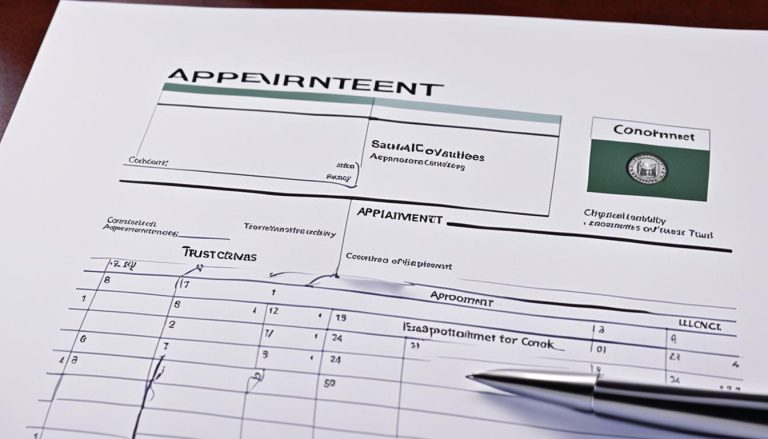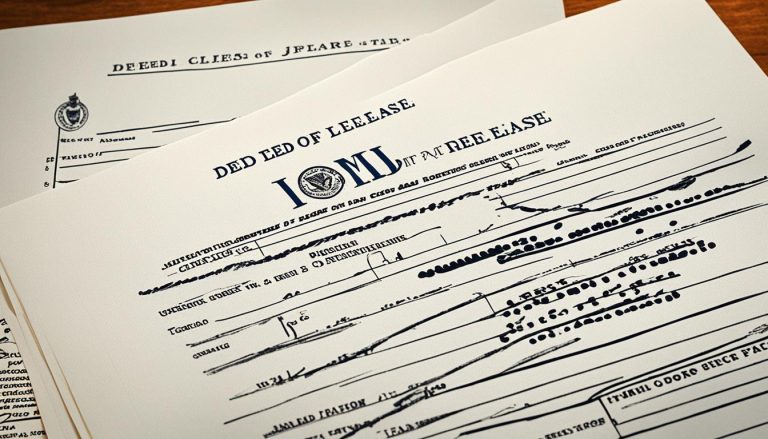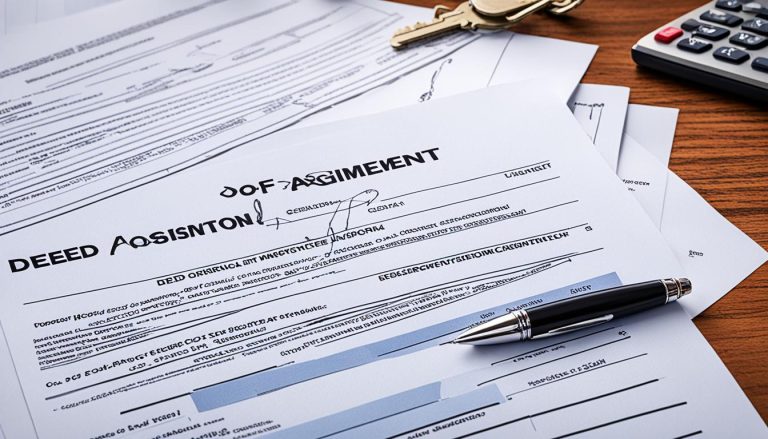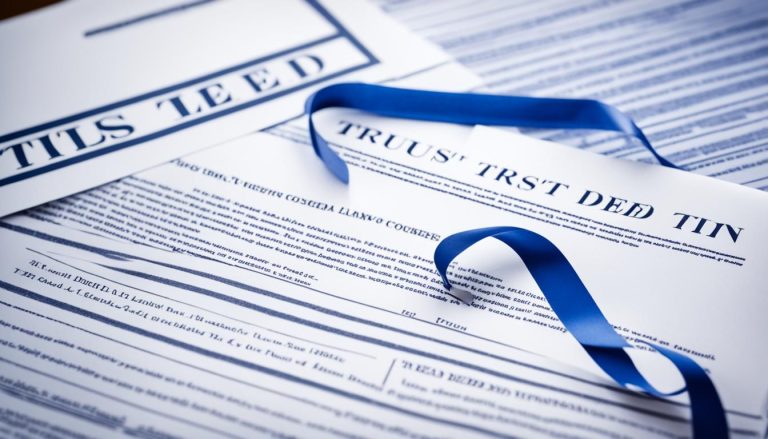Join us as we uncover the secrets to drafting a robust Deed of Partnership, illuminating key provisions, pitfalls to avoid, and strategies for safeguarding your interests. Together, we’ll embark on a quest for synergy, synergy, and success, forging alliances that stand the test of time and propel us towards our shared objectives.
What is a Deed of Partnership?
A deed of partnership, also known as a partnership agreement, is a legal document that outlines the terms and conditions of a business partnership. It is a crucial step in forming a sound business partnership as it provides clarity and prevents disputes and misunderstandings. Without a deed of partnership, businesses are subject to the Partnership Act 1890, which may not adequately address modern business needs. It is important to create a deed of partnership to protect the interests of all partners and ensure the longevity of the partnership.
Why is a Deed of Partnership Important?
A deed of partnership is crucial for the smooth functioning of a business partnership. By clearly defining the rights, responsibilities, and obligations of each partner, it helps to prevent disputes and conflicts that may arise in the future. Let’s take a closer look at why a deed of partnership holds such significance:
1. Avoiding Disputes and Conflicts
One of the key reasons why a deed of partnership is important is its ability to provide clarity and transparency. It clearly outlines the partner responsibilities, including the balance of work and capital input, profit allocation, and roles and duties. By explicitly stating these aspects, it helps to avoid any misunderstandings or disagreements that can lead to conflicts among partners.
2. Addressing Important Considerations
A well-drafted deed of partnership addresses crucial aspects of the partnership, such as tax and recordkeeping responsibilities, and even annual leave arrangements. This ensures that all partner responsibilities and expectations are clearly defined, leaving no room for ambiguity. The document also establishes provisions for retirement, death, insolvency, and general misconduct of partners, protecting the partnership from potential disruptions.
3. Dispute Resolution and Partnership Dissolution
Partnership disputes can arise from various reasons, including differences in opinion, breaches of contract, or changes in business circumstances. To protect the partnership and its partners, a well-structured deed of partnership includes clauses for dispute resolution. These clauses outline the process to be followed in case of conflicts, providing a framework for resolving disputes amicably and avoiding legal battles. Furthermore, a deed of partnership also includes provisions for the dissolution of the partnership, ensuring a smooth exit process in case the partnership needs to be concluded.
4. Legal Protection
A robust partnership contract, found within the deed of partnership, provides legal protection to the partners and the business. It acts as a legally binding agreement between the partners, safeguarding their rights and interests. In case of any breaches of contract or legal disputes, a well-documented and executed deed of partnership can serve as concrete evidence and strengthen the partners’ position.
A deed of partnership is an essential document that promotes transparency, establishes clear partner responsibilities, and provides mechanisms to resolve conflicts and dissolve the partnership if needed. It is crucial for any business partnership to have a well-drafted deed of partnership in place to ensure both operational efficiency and long-term sustainability.
What should be included in a Deed of Partnership?
A deed of partnership is a crucial document for governing a business partnership effectively. To ensure clarity and prevent disputes, it should include essential details covering the following aspects:
1. Names and Addresses of Partners
The deed should clearly state the full names and addresses of all partners involved in the business.
2. Nature of the Business
Describe the nature of the business partnership, including the industry, product/service offerings, and the target market.
3. Capital Contributions
Specify the capital contributions made by each partner at the establishment of the partnership. This information is vital for determining the ownership percentage and profit sharing ratios.
4. Profit Sharing Ratio
Outline the agreed-upon profit sharing ratios amongst the partners. This ratio determines how the profits and losses will be distributed among the partners.
5. Roles and Responsibilities
Clearly define the roles, responsibilities, and duties of each partner within the partnership. This helps in avoiding conflicts and ensures clarity in decision-making.
6. Decision-Making Process
Specify the decision-making process within the partnership, including the method of voting and how major decisions will be reached.
7. Dispute Resolution Mechanisms
Include clauses for resolving disputes and conflicts that may arise among partners. This may involve mediation, arbitration, or other agreed-upon methods.
8. Retirement, Death, or Dissolution
Outline the procedures and provisions for retirement, death, or dissolution of the partnership. This ensures a smooth transition and protects the interests of the partners involved.
By including these essential details, a deed of partnership provides a solid foundation for a successful business partnership, promoting transparency, and minimizing conflicts.

Benefits of Registering a Partnership Deed
Registering a partnership deed provides numerous benefits for a business partnership. The legal recognition granted to the partnership through registration ensures that the partnership document is safeguarded from destruction or loss. This crucial step offers protection and peace of mind, allowing partners to focus on growing their business without worrying about the integrity of the partnership agreement.
One of the key advantages of registering a partnership deed is the eligibility it provides for obtaining a PAN (Permanent Account Number) and opening a bank account. These are essential requirements for conducting business activities, managing finances, and facilitating transactions smoothly. By having a registered partnership deed, partners can easily fulfill these obligations and gain access to crucial financial resources.
Furthermore, a registered partnership deed adds credibility and validity to the partnership. In case of disputes or legal proceedings, the partnership deed can serve as strong evidence, ensuring partners’ interests are protected and providing a clear framework for dispute resolution. The legally recognized status of the partnership strengthens its reputation and can enhance business opportunities and relationships with other entities.
It’s worth noting that partnership deeds can be formatted based on the specific type of partnership, such as general partnership, limited partnership, or limited liability partnership. Having access to partnership deed templates can provide a helpful starting point for customizing the document to fit the unique needs and preferences of the partnership. These templates streamline the process of creating a partnership deed, saving time and effort.
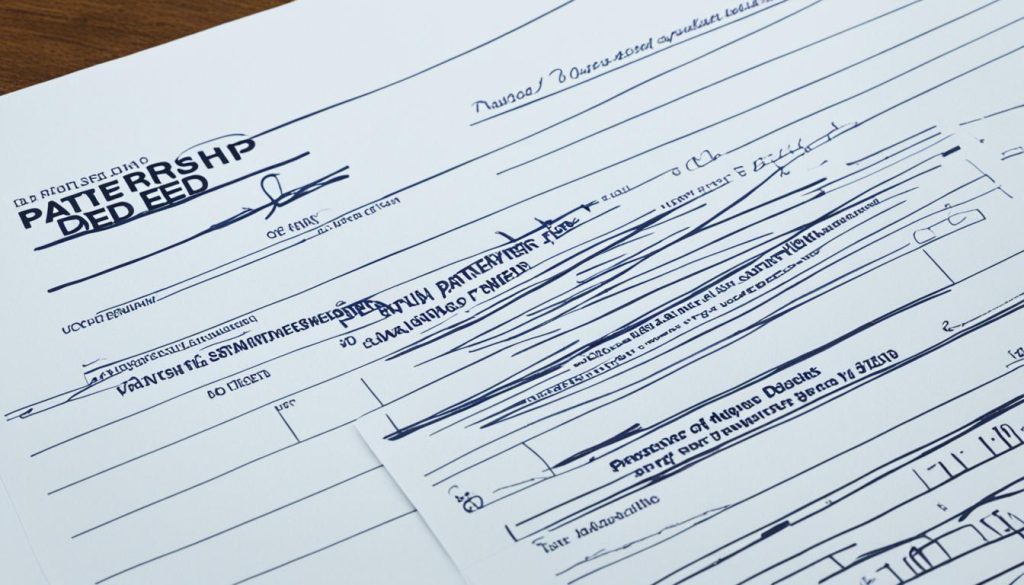
Types of Partnership Deeds
Partnership deeds come in various types, designed to suit different partnership structures and arrangements. Here are some examples:
| Type of Partnership Deed | Description |
|---|---|
| General Partnership Deed | A partnership deed for a general partnership, where all partners share equal rights, responsibilities, and liabilities. |
| Limited Partnership Deed | A partnership deed that includes both general partners, who have unlimited liability, and limited partners, who have limited liability. |
| Limited Liability Partnership (LLP) Deed | A partnership deed for an LLP, which offers limited liability protection to all partners and combines elements of both partnerships and corporations. |
These are just a few examples, and partnership deeds can be customized based on the specific requirements of the partnership. Understanding the different types of partnership deeds available enables partners to choose the most suitable structure that aligns with their business goals and preferences.
How to Draft a Partnership Deed?
When creating a partnership deed, it is essential to consider the specific needs and requirements of the partnership to ensure its effectiveness and provide adequate protection to all partners. The partnership deed plays a crucial role in outlining the terms and conditions of the partnership, including the names and addresses of the partners, the nature of the business, capital contributions, profit sharing ratio, duties and obligations, and provisions for retirement, death, and dissolution.
To draft a comprehensive partnership deed, it is recommended to seek the assistance of experienced legal professionals who can provide expert guidance and ensure that all relevant aspects are addressed. Their knowledge and expertise can help minimize potential legal pitfalls and ensure that the partnership deed is legally binding and enforceable.
Each partner should carefully review the terms outlined in the partnership deed before its execution, as it is crucial for all partners to fully understand and agree upon the provisions. This helps establish clarity and prevents disputes in the future.
By investing time and effort into the drafting process, partners can create a partnership deed that not only provides protection but also acts as a roadmap for the successful operation of the partnership. It is a crucial document that sets the foundation for the partnership’s growth, sustainability, and eventual dissolution, if required.
Benefits of Drafting a Partnership Deed:
- Importance of Partnership Deed
- Protection Provided by Partnership Deed
- Partnership Dissolution Procedure
Table:
| Benefits of Drafting a Partnership Deed | Importance | Protection | Procedure |
|---|---|---|---|
| Clarity and Avoidance of Disputes | Defines the rights and obligations of each partner, minimizing misunderstandings. | Safeguards the interests of all partners in various business scenarios. | Outlines the process for dissolving the partnership, ensuring a smooth transition. |
| Evidence in Legal Proceedings | Provides legal recognition to the partnership, strengthening its credibility. | Serves as evidence in case of disputes or legal proceedings. | Establishes a clear and structured procedure for partnership dissolution. |
| Financial and Operational Organization | Addresses financial aspects, such as capital contributions and profit sharing. | Outlines the duties and obligations of each partner, ensuring smooth operations. | Provides a framework for dealing with partnership dissolution, protecting partners’ interests. |

Conclusion
A partnership deed is a crucial document for creating a successful and harmonious business partnership. It outlines the rights, responsibilities, and obligations of each partner, ensuring clarity and preventing disputes. The deed also includes provisions for the dissolution of the partnership, protecting the interests of all partners involved. By creating a well-drafted and registered partnership deed, partners can safeguard their business and maintain a healthy and productive partnership. Consulting legal professionals and customizing the partnership deed to the specific needs of the partnership is essential for ensuring its effectiveness and validity.
When it is time to conclude a partnership, the partnership dissolution process becomes vital. Partners must follow the agreed-upon procedures outlined in the partnership deed to ensure a smooth exit process. By adhering to these procedures, partners can minimize conflicts and liabilities, allowing for a peaceful and fair conclusion.
In conclusion, a well-structured partnership deed is the foundation for a successful partnership. It provides clarity, prevents disputes, and protects the interests of all partners. By properly documenting and registering the partnership deed, partners can ensure legal recognition and a solid basis for their business activities. When the time comes to conclude the partnership, following the partnership dissolution process is crucial. By doing so, partners can efficiently and fairly exit the partnership, allowing for a seamless transition to new endeavors.


